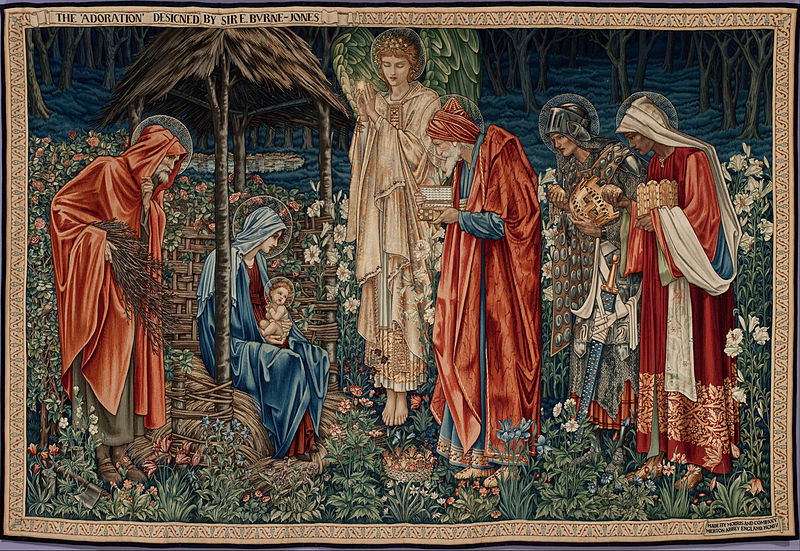Sometimes gruesome, dangerous, or ridiculous, pigments have a colorful history.
 |
|
The Last Sleep of Arthur in Avalon, 1881-1888, Edward Burne-Jones, courtesy Museum of Art in Ponce Puerto Rico. This was painted before Burne-Jones had his epiphany about Mummy Brown.
|
Mummy Brown was a rich brown pigment, located somewhere between the umbers and siennas. Manufactured through the 19th century, it was a mixture of pitch, myrrh, and the ground-up remains of mummies, either human or cat. (Cat mummies were also imported to England for use as fertilizer; they were raised by the ancient Egyptians by the tens of thousands, killed in kittenhood, mummified and sold to pious pilgrims. They were common as dirt.)
 |
|
An Egyptian mummy dealer selling his wares, c. 1870. Courtesy Harvard Art Museums/Fogg Museum
|
Mummy Brown was a favorite color of the Pre-Raphaelites. Edward Burne-Jonesonce invited his pal Lawrence Alma-Tademaover for lunch. “Mr. Tadema startled us by saying he had lately been invited to go and see a mummy that was in his colourman’s workshop before it was ground down into paint. Edward scouted the idea of the pigment having anything to do with a mummy — said the name must be only borrowed to describe a particular shade of brown — but when assured that it was actually compounded of real mummy, he left us at once…” wrote Lady Bourne-Jones.
The story was taken up by her nephew,
Rudyard Kipling. “He descended in broad daylight with a tube of ‘Mummy Brown’ in his hand, saying that he had discovered it was made of dead Pharaohs and we must bury it accordingly. So we all went out and helped – according to the rites of Mizraim and Memphis, I hope – and to this day I could drive a spade within a foot of where that tube lies.”
 |
|
Wife of a Donator, c. 1450, Petrus Christus, courtesy National Gallery of Art, Washington. Her gown is Caput Mortuum.
|
Mummy Brown is not to be confused with Caput Mortuum, although the names were sometimes interchanged. Caput Mortuum was a purple form of hematite iron oxide, popular for painting the robes of saints. It was the by-product of sulfuric acid manufacture.
The pigment called Dragon’s Blood was supposedly a mix of dragon and elephant blood. “[Elephants] have continual warre against Dragons, which desire their blood, because it is very cold: and therefore the Dragon lying awaite as the Elephant passeth by, windeth his taile, being of exceeding length, about the hinder legs of the Elephant, and when the Elephant waxeth faint, he falleth down on the serpent, being now full of blood, and with the poise of his body breaketh him: so that his owne blood with the blood of the Elephant runneth out of him mingled together, which being colde, is congealed into that substance which the Apothecaries call Sanguis Draconis, that is Dragons blood, otherwise called Cinnabaris.” (Alchemist
Richard Eden)
 |
|
The Burning of the Houses of Lords and Commons, 1834-35, JMW Turner, courtesy Philadelphia Museum of Art. Turner used Indian Yellow extensively.
|
Dragon’s Blood actually comes from the sap of
Dracaena cinnabariand is extremely fugitive. Not that true cinnabar was anything to write home about, since it contains toxic levels of mercury. Despite that, it was once a popular cosmetic and art material.
Indian Yellow was said to be made by feeding mango leaves to malnourished cows and collecting their urine. Historian
Victoria Finlay searched legal records, visited the town where the stuff was allegedly made, and interviewed elderly locals. She concluded that the story was probably a fable to gin up interest in the color.
All of this leads to the pigment Kidney Hematite. By now, you’re wincing. But Kidney Hematite is just an ore with a distinctive shape. Ground or sculpted, it’s perfectly benign.







.jpg)